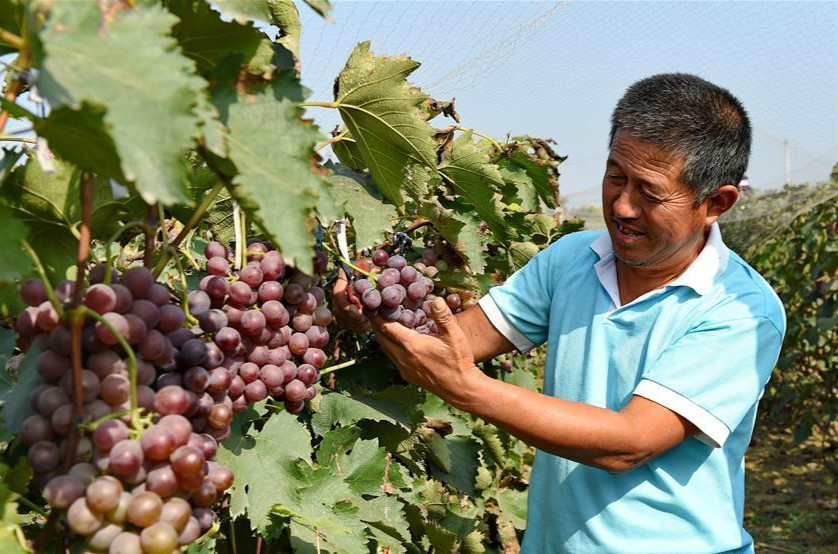Targeted poverty alleviation stresses education and ecology

A peasant picks grapes in his orchard at Xinhe County in Xingtai City, northern China’s Hebei Province. In recent years, the local government has aimed to alleviate poverty through the development of forestry and fruit farming.
Focusing on strategy and policy systems, the Annual Report on Targeted Poverty Alleviation in China (2016) was released on Oct. 17 in Beijing.
Jointly released by Central China Normal University (CCNU) and the State Council Leading Group Office of Poverty Alleviation and Development (CAPD), the report stresses the importance of understanding the strategy and system of targeted poverty alleviation in China.
Lu Hanwen, a professor of sociology from CCNU, said targeted poverty alleviation was carried out as the basic strategy formulated by the central government in 2015. Unprecedented efforts have been made by central and local agencies as well as industrial organizations, he added.
The scientific nature and integrity of the strategy and system of targeted poverty alleviation can be seen in three aspects, said Huang Chengwei, director of the National Center for Publicity and Education on Poverty Alleviation under CPAD.
The first aspect is functional. Government departments such as agriculture, employment, education and civil affairs have made targeted policies regarding poverty caused by different factors.
Second, the combination of national requirements and uniform policies with detailed localized measures reflects the tradition of “adapting measures to local conditions.” Finally, there is the historical aspect. The strategy and system is based on the current situation as well as a forward-looking perspective, Huang said.
China’s poverty alleviation officials first identified poverty areas across the nation, then about 600 poverty counties and 150,000 impoverished villages. Today there is a targeted strategy under which every individual low-income household is registered, said Li Zhou, a research fellow from the Rural Development Institute under the Chinese Academy of Social Sciences.
For those able to work, it is necessary for the nation to encourage them to be engaged in industrial development, find employment and start their own businesses, Li said.
Poverty alleviation requires a combination of material, social and human capital, Huang said, adding that the aspect of human capital requires the nation to invest more in the education for poverty alleviation.
First of all, during the registration of poverty households, additional policies should be made that target children living within them. In addition to this, more preferential educational and training support should be provided to young laborers that are about to enter the workforce after graduating from junior and senior high schools, he said.
Lu said the education system is entrusted with the mission of stopping the intergenerational cycle of poverty. To complete this mission, the children of low-income households should be provided with an equal education without exception, he said.
The report also points out a new approach to poverty alleviation that incorporates ecological protection.
Zhang Qi, director of the China Center for Poverty Reduction Research at Beijing Normal University, said China’s poor areas have mostly an intact ecosystem which makes them favorable for targeted poverty alleviation through the development of sustainable agriculture, he said.
Ecological poverty alleviation should adhere to the principle of combining protection and development, Lu said. The nation should promote more ecological projects and convert part of the low-income population into ecological workers. The government should encourage the development of low-carbon poverty alleviation, ecological agriculture and ecological tourism, he added.

 PRINT
PRINT CLOSE
CLOSE